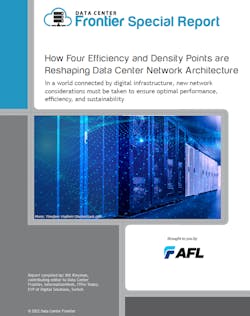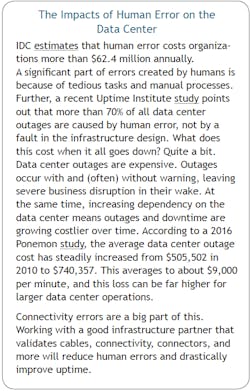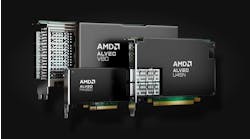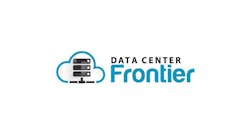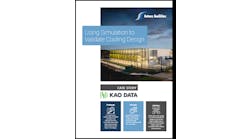From Legacy to Digital Infrastructure: Design, Component, and Services Concepts
Last week we launched our article series on efficiency and density points that are reshaping data center network architecture. In this article, we'll explore how design and components have evolved.
Change is the current constant in the modern data center landscape. It’s essential to take a reflective look at the business to understand how legacy solutions might impact the overall approach to new digital trends. Other critical concerns with legacy systems are design, delivery, and operation challenges. Cabling, networking, and communication happening within a facility are much different than ever before. While we’ll cover this soon, working with new solutions is critical to reducing errors and improving operational efficiency.
The only way to truly embrace a digital infrastructure is to understand the significant trends in today’s data centers. Regarding data center design, consider these new and critical trends.
- There are new solutions around distributed computing and edge. According to Gartner, around 10% of enterprise-generated data is created and processed outside a traditional centralized data center or cloud. By 2025, Gartner predicts this figure will reach 50%, meaning that services around the edge will continue to evolve and grow. Furthermore, the edge will require a broader focus on connectivity and telecommunications for the best possible experience.
- 5G and new methods of connectivity will impact digital modernization efforts. Gartner also noted that 5G was one of the main drivers for mobility in 2020, with the market for 5G infrastructure hitting more than $4 billion and two-thirds of companies deploying 5G in 2020. The connectivity around 5G and new telecommunication solutions are poised to revolutionize how we work, live, and stay productive. According to Ericsson, towards the end of 2020, there were already more than 92 commercial 5G networks in 38 countries, with more than 320 million 5G subscribers forecasted in the United States by the end of 2025.
- IoT is now everywhere. The proliferation of connected devices will not likely slow any time soon. There’s a connected revolution going on from personal smart devices to the inside walls and ceilings of modern buildings. For example, smart buildings, where devices converge onto a shared IT infrastructure, can deliver more operational functions and improve occupant experience.
According to Ericsson, towards the end of 2020, there were already more than 92 commercial 5G networks in 38 countries, with more than 320 million 5G subscribers forecasted in the United States by the end of 2025.
With the mandate of “do more with less,” what are leaders doing to avoid deployment fatigue where data center and business operators simply don’t know where to optimize operations?
Challenges in the Digital Age
New solutions are changing the way technology leaders design critical infrastructure. New designs are helping engineers and architects create denser and more efficient solutions within data center walls.
Data center operators and managers set their sites on innovative designs. Emerging concepts are being used to gain a competitive edge, from new optical cabling solutions to renewable energy sources.
Beyond traditional designs, leaders are still asking the following questions about challenges in a persistently connected world:
- Can our digital infrastructure work smarter, better, and more sustainably?
- How can we provide more innovative solutions?
- How are downtime and outages dealt with?
- Is it possible to leverage systems to help comply with various environmental requirements, compliance regulations, and data privacy demands?
- Is it easy to find the cause and not just a resolution if a problem occurs?
- How do I effectively reduce human errors due to complexity?
Let’s look at some emerging design and partner solutions to help you overcome the challenges we’ve discussed.
New Connectivity Solutions Create New Design and Partner Considerations
Sure, your current partner is doing a decent job of helping you navigate the cloud and data center waters. However, new partners take a much more macro perspective into creating a digital infrastructure capable of ensuring performance, latency control, and efficiency.
Supporting the balance between edge, cloud, various data center models (on-prem, hybrid, etc.), and emerging solutions are the partners that help us keep our digital infrastructure operating. Much like the diversity in data centers, not all partners can adequately design, implement, and maintain
a digital ecosystem. When it comes to cabling and connectivity, the following brief list is a sampling of what modern data center and cloud partners are diving deeper into to help their customers compete in a digital economy:
- Digital connectivity (including latency, resiliency, performance, and networking)
- New types of managed services
- Improving time-to-market and speed-to-deploy
- Supply chain management (think locally, deploy globally)
- Cloud services (public, private, edge, hybrid, multi-cloud)
- Emerging data center architecture (edge and 5G, hyperscale, cloud, colocation, and more)
- Ensuring the strategic value of the digital infrastructure
- Simplifying critical deployments and reducing human error
- Making troubleshooting easier and finding the root-cause faster
- Green technology and energy consumption
Let’s stay on that last point for a minute. Working with greener technology and improving energy consumption has become one of the most critical consideration points when designing digital infrastructure. It’s a vital part of the cloud and data center balance. We’ll touch on this again in an upcoming article.
Leaders must understand emerging design and efficiency requirements in creating a connected ecosystem to support new digital requirements.
Download the entire report, How Four Efficiency and Density Points are Reshaping Data Center Network Architecture, featuring AFL, to learn more. In our next article, we'll explore design strategies to support digital infrastructure.


